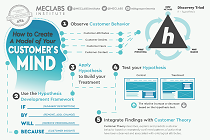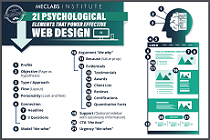
|
SUMMARY:
We tend to think of marketing’s goal as conversion. Or perhaps branding. However, as we see in this week’s chart, the marketing experience impacts customer satisfaction as well. Read on to see the chart (and grab it for your own presentations), along with analysis and commentary from MarketingSherpa and Nick Mango, Account Manager, Eriksen Translations. (As seen in the MarketingSherpa Chart of the Week newsletter. Click to get a free subscription to the latest research and case studies from MarketingSherpa.) |
We asked 1,200 consumers, sampled to reflect a close match to the U.S. population's demographics, to tell us about a company they were satisfied with. We then asked them a range of questions, including …
Thinking about the marketing of [company name], which of the following is true of your experience? Select all that apply.

(The chart will open in a new window, click and zoom to read the data.)
To see 34 more charts from the study, download the free report.
Consistent good experiences are the top way marketing helps create satisfied customers
The biggest way marketing can help create satisfied customers is by creating consistent good experiences, according to the data. “I consistently have good experiences with it” was the top response by satisfied customers when asked about that company’s marketing.
While it was the top response for all age groups, older generations were more likely to select it. Three-fourths of the Silent Generation (born between 1925 and 1945) chose this option, while just half (49%) of millennials (born between 1980 and 1995) chose the option.
As you can see when you look at the chart, this was a pretty consistent pattern — up to a point. As age moved from older to younger, there was a downward slope of how often respondents chose an option, even though the order of topics for all the generations was roughly the same.
The inflection point comes when the topics switched to a more customer-first marketing focus. For the following selections, the responses flipped and the younger generations were more likely to select them than the older generations, with millennials leading the way:
Is customer-first marketing an emerging trend or always more likely to be favored by younger generations?
Any time you see a pattern like this in the data, there could be one of two explanations.
It could simply be that younger people are more interested in customer-first marketing. And as millennials age, they too will focus on other elements of marketing (consistency) over customer-first marketing (a company putting customers’ needs and wants above its own business goals).
Marketing has shifted from authoritative source to ironic entertainment to the age of transparency
Or could this data signal a shift in consumers’ views toward marketing in general? Over the past few decades, marketing has shifted from authoritative source to ironic entertainment to the age of transparency. Younger consumers may simply have grown up in the age of transparency and come to naturally expect transparent marketing and a customer-first business approach.
Speak to customers in their language
As you can see, it’s important to speak to different generations in a language that will appeal to them.
For example, older generations might respond better to a consistency message, while younger generations might find a customer-first message more appealing. (Please note, this is a very broad brushstroke approach. However, if you don’t have the data or technology to get more personal, segmenting by generations is at least a start).
To give you an idea of how to speak in the language of your customer segments, I turned to a source that has to do this every day — a translation service — to see what we can learn for our own marketing messages.
At first, translation might seem extreme; their different segments literally speak different languages. But if you ever really thought about it while you were lampin’ (or insert your preferred slang term here), you can see that 18-year-olds and 80-year-olds practically speak a different language from each other, as do other customer subsets.
Transcreation
“In order to truly craft their messaging, many of our clients require ‘transcreation’ to fully reinvent their message for each target audience,” Nick Mango, Account Manager, Eriksen Translations, told me.
“Translation involves rendering a message into another language so that it sounds as if it was written by a native speaker of that language. Transcreation, also known as creative translation, is about adapting ideas and concepts. It takes into consideration the cultural differences and the effectiveness of the content on the target culture, to reinvent the message so that it truly speaks to each audience in their own language,” he said.
“This approach puts the client first. The clients’ needs, their culture and their worldview are key to crafting a message that will resonate,” Mango said.
Understanding your customers’ worldview
Is effective messaging to customer segments really so different?
It’s important to always start with their worldview — not what you want to sell them, what action you want them to take or the channels you would like them to get your message in and communicate through.
Then consider, based on their worldview, how they might perceive your marketing and how different techniques will sit with them — either increasing or decreasing their likelihood to act, as well as how that perception will impact their overall satisfaction with your company.
Related resources
Marketing Chart: Does customer-centric marketing fall short of satisfying the customer?
Transparent Marketing: How to earn the trust of a skeptical consumer
The Importance Of Building Trust: What 2,400 consumers say about trust in the conversion process
Get free reports, how-to guides and tools to help you improve your marketing
Get Better Business Results With a Skillfully Applied Customer-first Marketing Strategy

The customer-first approach of MarketingSherpa’s agency services can help you build the most effective strategy to serve customers and improve results, and then implement it across every customer touchpoint.
Get More Info >MECLABS AI

Get headlines, value prop, competitive analysis, and more.
Use the AI for FREE (for now) >Marketer Vs Machine

Marketer Vs Machine: We need to train the marketer to train the machine.
Watch Now >Live, Interactive Event

Join Flint McGlaughlin for Design Your Offer on May 22nd at 1 pm ET. You’ll learn proven strategies that drive real business results.
Get Your Scholarship >Free Marketing Course

Become a Marketer-Philosopher: Create and optimize high-converting webpages (with this free online marketing course)
See Course >Project and Ideas Pitch Template

A free template to help you win approval for your proposed projects and campaigns
Get the Template >Six Quick CTA checklists

These CTA checklists are specifically designed for your team — something practical to hold up against your CTAs to help the time-pressed marketer quickly consider the customer psychology of your “asks” and how you can improve them.
Get the Checklists >Infographic: How to Create a Model of Your Customer’s Mind

You need a repeatable methodology focused on building your organization’s customer wisdom throughout your campaigns and websites. This infographic can get you started.
Get the Infographic >Infographic: 21 Psychological Elements that Power Effective Web Design

To build an effective page from scratch, you need to begin with the psychology of your customer. This infographic can get you started.
Get the Infographic >Receive the latest case studies and data on email, lead gen, and social media along with MarketingSherpa updates and promotions.